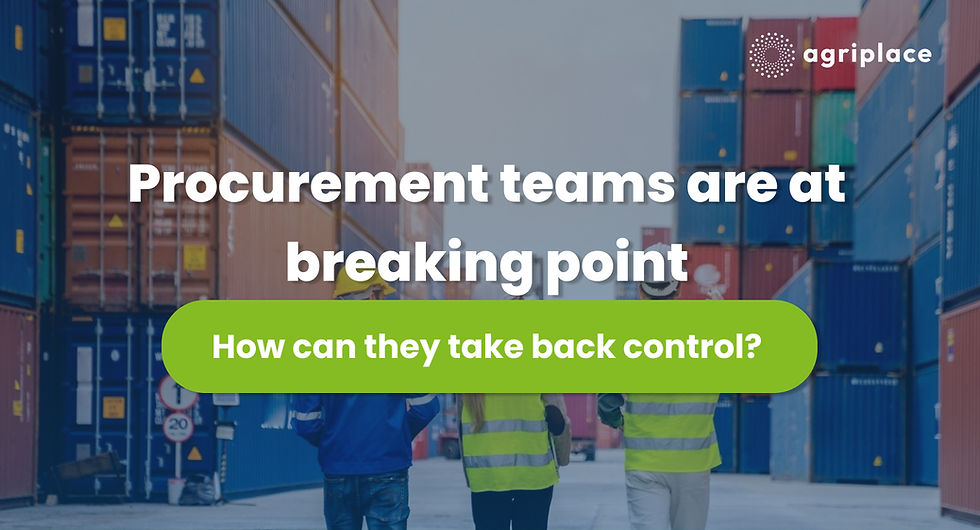PPWR 101: What Companies Need to Know Before 2026
- caoilinnokelly
- Oct 27
- 3 min read
Updated: 7 days ago

What Is the PPWR?
The EU’s Packaging and Packaging Waste Regulation (PPWR) entered into force on 11 February 2025 and will apply from 12 August 2026.
It replaces the previous Packaging Directive and creates a single, EU-wide framework for packaging design, recyclability, reuse, and waste reduction.
For companies this shifts packaging from a branding & logistics topic to a core compliance obligation that affects procurement, quality, sustainability, and supplier management.
How does this affect companies?
Food and drink packaging is among the most heavily regulated under the PPWR because it intersects food safety, hygiene, and environmental performance.
Everyone, from retailers to suppliers must now ensure packaging is not only safe for food contact but also meets recyclability targets.
Success will require collaboration across the chain, processors, packaging manufacturers, distributors, and retailers to meet requirements on materials, transport packaging, and labelling.
When do we need to comply?
12 August 2026: Core PPWR obligations apply, including the PFAS restrictions with strict concentration limits.
1 January 2029: Beverage containers must achieve 90 % separate collection through deposit-return systems (DRS).
1 January 2030: All packaging must reach minimum recyclability performance standards; packaging with more than 50 % empty space will be non-compliant.
What can we already do to ensure compliance?
Auditing all food-contact and transport packaging for PFAS, coatings, and inks.
Collecting recyclability and composition data for every packaging format.
Engaging suppliers early to replace non-recyclable or multi-material packs.
What are the most important topics to consider?
Recyclability & Recycled Content: Any plastic part of packaging representing 5 % or more of the total weightmust include a minimum recycled plastic content. This means companies placing packaging on the EU market must be able to show the percentage of recycled plastic in each packaging type. This data will be verified through supplier declarations or certified traceability systems.
PFAS Limits: From 12 August 2026, food-contact packaging such as wraps, trays, and grease-resistant coatings must comply with PFAS concentration limits — 25 ppb (parts per billion) for any single PFAS, 250 ppb for total PFAS, and 50 ppm for total fluorine content.
Multi-Layer Films: Multi-layer films including those used for meat, cheese, or frozen foods combine several materials. These materials are difficult to recycle and can pose compliance risks. They must be assessed against the recyclability design-for-recycling criteria in upcoming delegated acts; to remain compliant, they will likely need to achieve at least Grade C (≥ 70 %) recyclability.Firms need to be cautious to ensure these products fall under the 70% recyclability threshold, and if necessary plan a re-design.
Private-Label Responsibility: Retailers placing own-brand products on the market are considered producersunder Extended Producer Responsibility (EPR) and must ensure packaging compliance and reporting, even if that packaging is made elsewhere. Companies placing products on the market under their brand name must ensure that all packaging meets design, recyclability and material requirements. Non-compliant packaging cannot be placed on the market after 12th August 2026.
Reuse & Refill: The PPWR sets specific reuse targets for beverage packaging by 2030 and beyond; retailers should plan return or refill systems for applicable categories. Although member states are responsible for the deposit-return schemes (DRS) under the PPWR, Extended Producer Responsibility (EPR) means that companies will have to register with the national deposit-return system and meet the recyclability and design criteria it requires.
What is the focus of the PPWR?
Under the PPWR, companies must prove compliance through recyclability assessments, supplier declarations, and documentation of material composition.
With hundreds of packaging types and suppliers, manual tracking is no longer viable.
Retailers and suppliers will need digital systems that can:
Store packaging composition and recyclability data at SKU level.
Track EPR registration and reporting.
Manage supplier declarations on PFAS and recycled content.
How do we start?
Companies preparing for PPWR should focus on three concrete steps:
Build a packaging data hub: centralise all packaging specifications, supplier declarations, and recyclability data in one digital system.
Prioritise high-risk materials: identify SKUs using PFAS, multi-layer plastics, or non-recyclable composites, and start substitution projects now.
Integrate compliance into sourcing: require PPWR-aligned packaging data from suppliers before purchase orders or private-label approvals.
By 2026, compliance will be a prerequisite for market access, not a differentiator.
Companies that invest now in accurate data, supplier collaboration, and verified recyclable packaging will minimise disruption and meet both regulatory and consumer sustainability expectations.




Comments